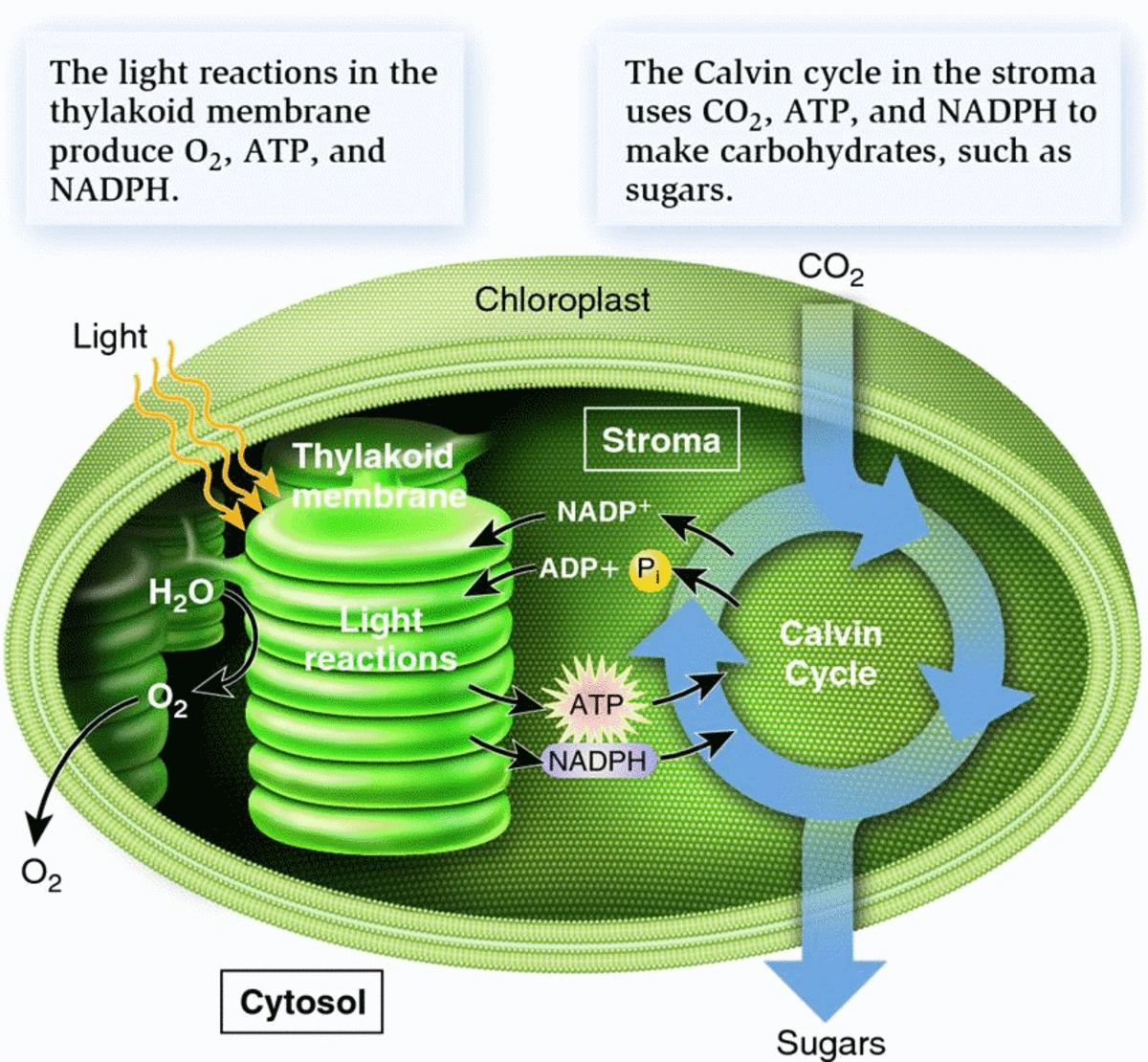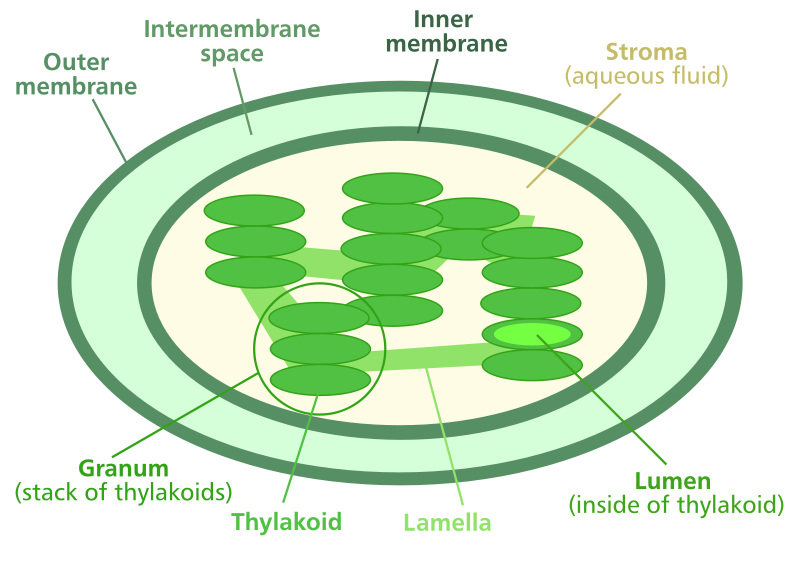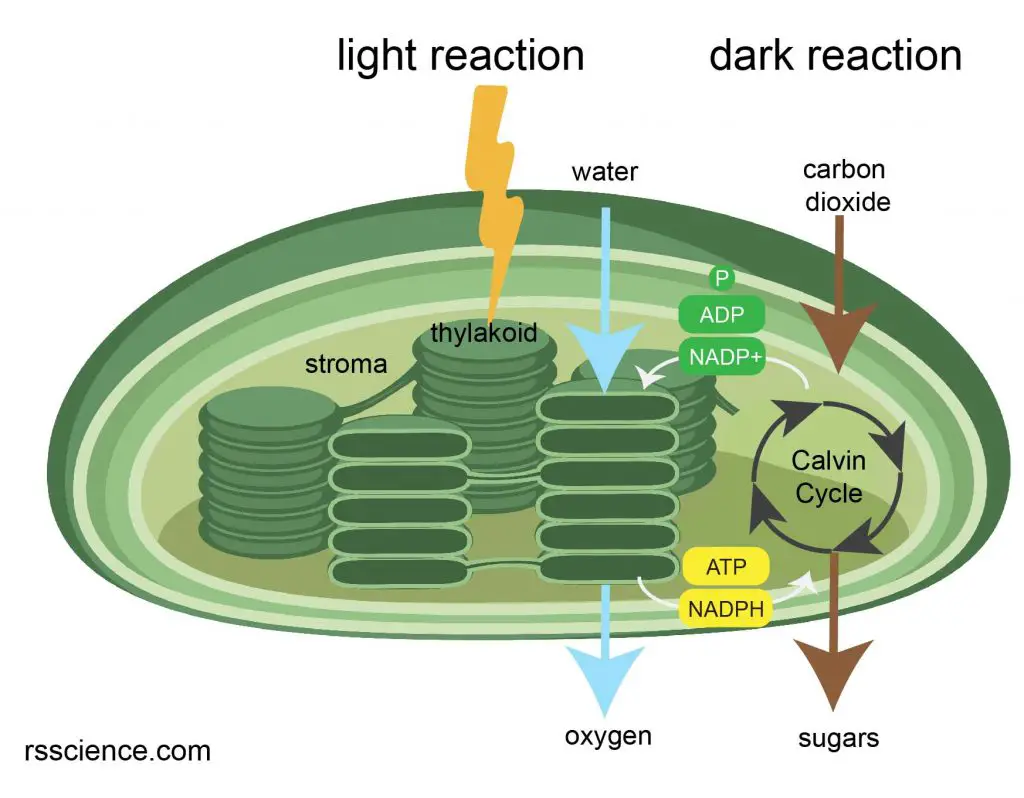What is the function of stroma in photosynthesis sets the stage for this enthralling narrative, offering readers a glimpse into a story that is rich in detail and brimming with originality from the outset. Photosynthesis, the process by which plants convert sunlight into energy, is a fundamental pillar of life on Earth. This intricate process unfolds in two distinct stages: the light-dependent reactions and the Calvin cycle.
The Calvin cycle, the second stage, takes place within the stroma, a gel-like matrix found inside chloroplasts.
The stroma is more than just a location; it is a bustling hub of activity, playing a crucial role in the synthesis of sugars, the primary fuel for plant growth. It houses a diverse array of enzymes that orchestrate the intricate steps of the Calvin cycle, converting carbon dioxide into glucose. The stroma also interacts with other components of the chloroplast, like the thylakoid membranes, ensuring a smooth flow of energy and essential products throughout the entire photosynthetic process.
Introduction to Photosynthesis

Photosynthesis is a vital process that sustains life on Earth. It is the process by which plants, algae, and some bacteria convert light energy from the sun into chemical energy in the form of glucose. This glucose is then used as food for the organism, providing energy for growth and other life processes. The process of photosynthesis also releases oxygen into the atmosphere, which is essential for the survival of most living organisms.
Photosynthesis is a complex process that can be divided into two main stages: the light-dependent reactions and the Calvin cycle.
Light-Dependent Reactions
The light-dependent reactions take place in the thylakoid membranes of chloroplasts. These reactions use light energy to produce ATP (adenosine triphosphate) and NADPH (nicotinamide adenine dinucleotide phosphate), which are energy carriers that will be used in the Calvin cycle.
- Light Absorption: Photosynthesis begins with the absorption of light energy by chlorophyll and other pigments located within the thylakoid membranes of chloroplasts. These pigments are responsible for capturing specific wavelengths of light, primarily in the red and blue regions of the visible spectrum.
- Electron Transport Chain: The absorbed light energy excites electrons in chlorophyll molecules, causing them to move to higher energy levels. These energized electrons are then passed along an electron transport chain, a series of protein complexes embedded in the thylakoid membrane. As electrons move through the chain, they release energy, which is used to pump protons (H+) from the stroma into the thylakoid lumen.
This creates a proton gradient across the membrane, which is used to generate ATP through a process called chemiosmosis.
- Water Splitting: The light-dependent reactions also involve the splitting of water molecules. This process, called photolysis, releases electrons that replace those lost from chlorophyll during light absorption. It also releases oxygen as a byproduct, which is released into the atmosphere.
- NADPH Formation: The energized electrons from the electron transport chain are eventually transferred to NADP+, reducing it to NADPH. NADPH is a reducing agent that will be used in the Calvin cycle to convert carbon dioxide into sugar.
The Role of Chloroplasts: What Is The Function Of Stroma In Photosynthesis

Chloroplasts are the organelles responsible for photosynthesis in plant cells. They are essentially the powerhouses of plant cells, converting light energy into chemical energy that fuels the plant’s growth and development.
Chloroplast Structure and Components, What is the function of stroma in photosynthesis
Chloroplasts are enclosed by a double membrane, known as the chloroplast envelope, which separates the chloroplast from the surrounding cytoplasm. The inner membrane encloses a fluid-filled space called the stroma. Within the stroma, a complex network of interconnected, flattened, sac-like structures called thylakoids are embedded. These thylakoids are stacked upon each other to form grana, which are connected by interconnecting lamellae.
- Chloroplast Envelope: The outer membrane is permeable to small molecules, while the inner membrane is selectively permeable, regulating the passage of molecules into and out of the chloroplast. It plays a crucial role in maintaining the chloroplast’s internal environment.
- Stroma: The stroma contains enzymes, DNA, ribosomes, and other components necessary for photosynthesis. It is the site of the Calvin cycle, where carbon dioxide is converted into sugars.
- Thylakoids: These are the sites of light-dependent reactions in photosynthesis. They contain chlorophyll and other pigments that capture light energy.
- Grana: Stacks of thylakoids are called grana, which increase the surface area for light absorption and maximize efficiency in photosynthesis.
Chlorophyll and Light Energy Capture
Chlorophyll is a green pigment found in chloroplasts, specifically within the thylakoid membranes. It is the primary pigment responsible for absorbing light energy. Chlorophyll absorbs light most strongly in the blue and red regions of the visible spectrum, while reflecting green light, which is why plants appear green.
Chlorophyll molecules are arranged in light-harvesting complexes within the thylakoid membranes. When a chlorophyll molecule absorbs a photon of light, an electron within the molecule is excited to a higher energy level. This excited electron can then be transferred to an electron transport chain, initiating the light-dependent reactions of photosynthesis.
The energy captured by chlorophyll is used to create ATP (adenosine triphosphate) and NADPH (nicotinamide adenine dinucleotide phosphate), which are energy carriers used in the Calvin cycle to convert carbon dioxide into sugars.
Stroma
The stroma is a dense fluid that fills the space inside the chloroplast, surrounding the thylakoid membranes. It is a complex mixture of enzymes, sugars, and inorganic ions, playing a crucial role in photosynthesis.
The Calvin Cycle
The stroma is the site of the Calvin cycle, the second stage of photosynthesis. This cycle uses the energy stored in ATP and NADPH, generated during the light-dependent reactions, to convert carbon dioxide into glucose. The Calvin cycle can be divided into three main stages: carbon fixation, reduction, and regeneration of the starting molecule.
Enzymes in the Stroma
The stroma contains a variety of enzymes that facilitate the different steps of the Calvin cycle. Some of the key enzymes include:
- Rubisco (Ribulose-1,5-bisphosphate carboxylase/oxygenase): This enzyme catalyzes the first step of the Calvin cycle, the fixation of carbon dioxide into an unstable six-carbon compound that quickly splits into two molecules of 3-phosphoglycerate. Rubisco is one of the most abundant proteins on Earth, playing a vital role in carbon fixation.
- Phosphoglycerate kinase: This enzyme converts 3-phosphoglycerate into 1,3-bisphosphoglycerate using ATP.
- Glyceraldehyde-3-phosphate dehydrogenase: This enzyme reduces 1,3-bisphosphoglycerate to glyceraldehyde-3-phosphate using NADPH.
- Triose phosphate isomerase: This enzyme interconverts glyceraldehyde-3-phosphate and dihydroxyacetone phosphate.
- Fructose-1,6-bisphosphatase: This enzyme catalyzes the hydrolysis of fructose-1,6-bisphosphate into fructose-6-phosphate.
- Sedoheptulose-1,7-bisphosphatase: This enzyme catalyzes the hydrolysis of sedoheptulose-1,7-bisphosphate into sedoheptulose-7-phosphate.
- Ribulose-5-phosphate kinase: This enzyme phosphorylates ribulose-5-phosphate into ribulose-1,5-bisphosphate, regenerating the starting molecule for the Calvin cycle.
Carbon Fixation
The first step of the Calvin cycle is carbon fixation, where carbon dioxide is incorporated into an organic molecule. This reaction is catalyzed by Rubisco, which combines carbon dioxide with ribulose-1,5-bisphosphate (RuBP), a five-carbon sugar, to form an unstable six-carbon compound. This compound quickly breaks down into two molecules of 3-phosphoglycerate, a three-carbon compound.
Sugar Production
The 3-phosphoglycerate molecules are then converted into glucose through a series of enzymatic reactions. These reactions use the energy stored in ATP and NADPH, produced during the light-dependent reactions, to reduce 3-phosphoglycerate to glyceraldehyde-3-phosphate. Glyceraldehyde-3-phosphate is a three-carbon sugar that can be used to produce glucose or other organic molecules.
The Calvin cycle is a complex process that requires a series of enzymatic reactions to convert carbon dioxide into glucose. The stroma provides the necessary environment and enzymes for this process to occur.
Stroma’s Interaction with Other Chloroplast Components
The stroma, a semi-fluid matrix within the chloroplast, plays a crucial role in photosynthesis by interacting with the thylakoid membranes and grana, the stacks of thylakoid membranes. These interactions facilitate the flow of energy and products, ultimately contributing to the production of glucose.
Stroma and Thylakoid Membranes: Energy Flow and Product Exchange
The stroma and thylakoid membranes are intimately connected, enabling a dynamic exchange of energy and products. The thylakoid membranes, where light-dependent reactions occur, generate ATP and NADPH, which are essential for the light-independent reactions in the stroma. These reactions, also known as the Calvin cycle, utilize the energy from ATP and NADPH to fix carbon dioxide and produce glucose.The thylakoid membranes contain embedded protein complexes that capture light energy and drive the production of ATP and NADPH.
These energy carriers then diffuse from the thylakoid membranes into the stroma, where they are utilized by enzymes in the Calvin cycle. The Calvin cycle, in turn, produces glucose, which is transported out of the chloroplast to be used by the plant for growth and other metabolic processes.
The flow of energy and products between the stroma and thylakoid membranes is a key aspect of photosynthesis, enabling the conversion of light energy into chemical energy stored in glucose.
Stroma and Grana: Facilitating Photosynthesis
The grana, stacks of thylakoid membranes, are interconnected by stroma lamellae, which are thin, flat thylakoid membranes that extend from one granum to another. This interconnected structure allows for efficient energy transfer and product exchange between the thylakoid membranes and the stroma.The grana provide a large surface area for the light-dependent reactions to occur, maximizing the capture of light energy.
The stroma, surrounding the grana, provides a suitable environment for the light-independent reactions, allowing enzymes to efficiently catalyze the conversion of carbon dioxide into glucose.
The grana and stroma work together to facilitate the overall process of photosynthesis, ensuring efficient energy capture and utilization for glucose production.
Stroma’s Importance in Plant Growth and Development

The stroma, the gel-like matrix within chloroplasts, is not just a passive space for photosynthesis. It actively participates in the production of essential molecules that drive plant growth and development. The Calvin cycle, a key metabolic pathway occurring within the stroma, synthesizes crucial organic compounds that fuel various cellular processes.
The Role of the Calvin Cycle Products in Plant Growth
The Calvin cycle is the central hub for carbon fixation in photosynthesis. It utilizes the energy captured from light-dependent reactions to convert carbon dioxide into glucose, the primary source of energy for plants. However, the Calvin cycle produces more than just glucose. Other important products, such as glyceraldehyde-3-phosphate (G3P) and ribulose-1,5-bisphosphate (RuBP), are crucial for plant growth and development.
- Glyceraldehyde-3-phosphate (G3P): G3P is a three-carbon sugar that serves as a precursor for the synthesis of various essential molecules, including glucose, fructose, and starch. Glucose provides energy for cellular activities, while fructose is a primary sugar transported throughout the plant. Starch, a complex carbohydrate, serves as a long-term energy storage molecule.
- Ribulose-1,5-bisphosphate (RuBP): RuBP is a five-carbon sugar that acts as the primary carbon dioxide acceptor in the Calvin cycle. It is continuously regenerated to ensure the cycle’s continued operation, allowing for the efficient fixation of carbon dioxide.
In conclusion, the stroma serves as the heart of the Calvin cycle, orchestrating the production of sugars that power plant growth and development. Its intricate interactions with other chloroplast components highlight the interconnectedness of this essential process. Understanding the function of the stroma provides a deeper appreciation for the complexity and elegance of photosynthesis, a process that sustains life on Earth.
Expert Answers
What are the key enzymes present in the stroma and what are their roles?
The stroma contains enzymes like Rubisco, which fixes carbon dioxide, and ATP synthase, which generates ATP, the energy currency of the cell. These enzymes work in concert to drive the Calvin cycle and produce sugars.
How does the stroma contribute to the production of carbohydrates, amino acids, and other essential molecules?
The sugars produced in the stroma are the building blocks for other essential molecules, including carbohydrates, amino acids, and lipids. These molecules are crucial for plant growth, development, and survival.
What is the significance of the interaction between the stroma and the thylakoid membranes?
The thylakoid membranes are the site of the light-dependent reactions, where light energy is captured and converted into chemical energy in the form of ATP and NADPH. These energy carriers are then transported to the stroma, where they power the Calvin cycle.






